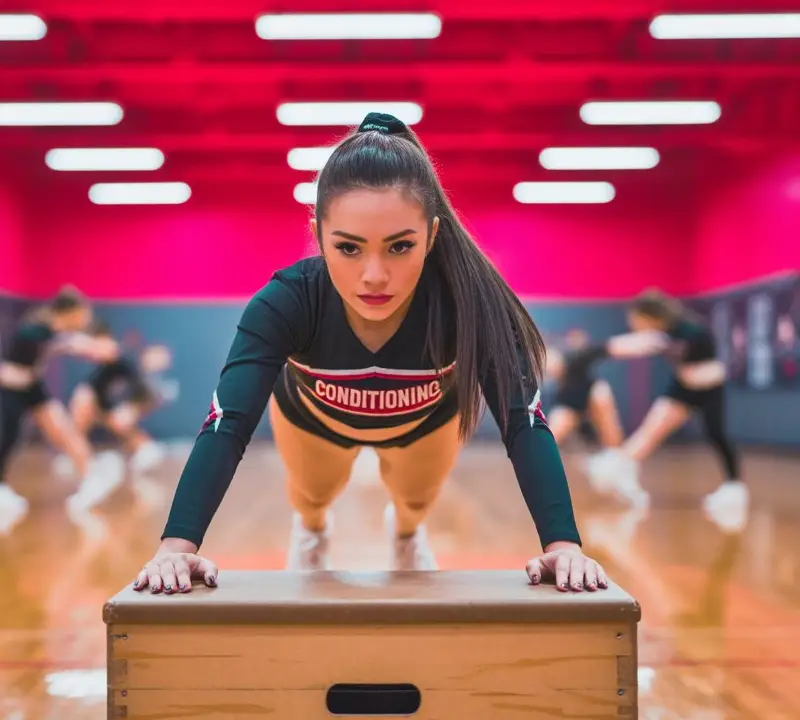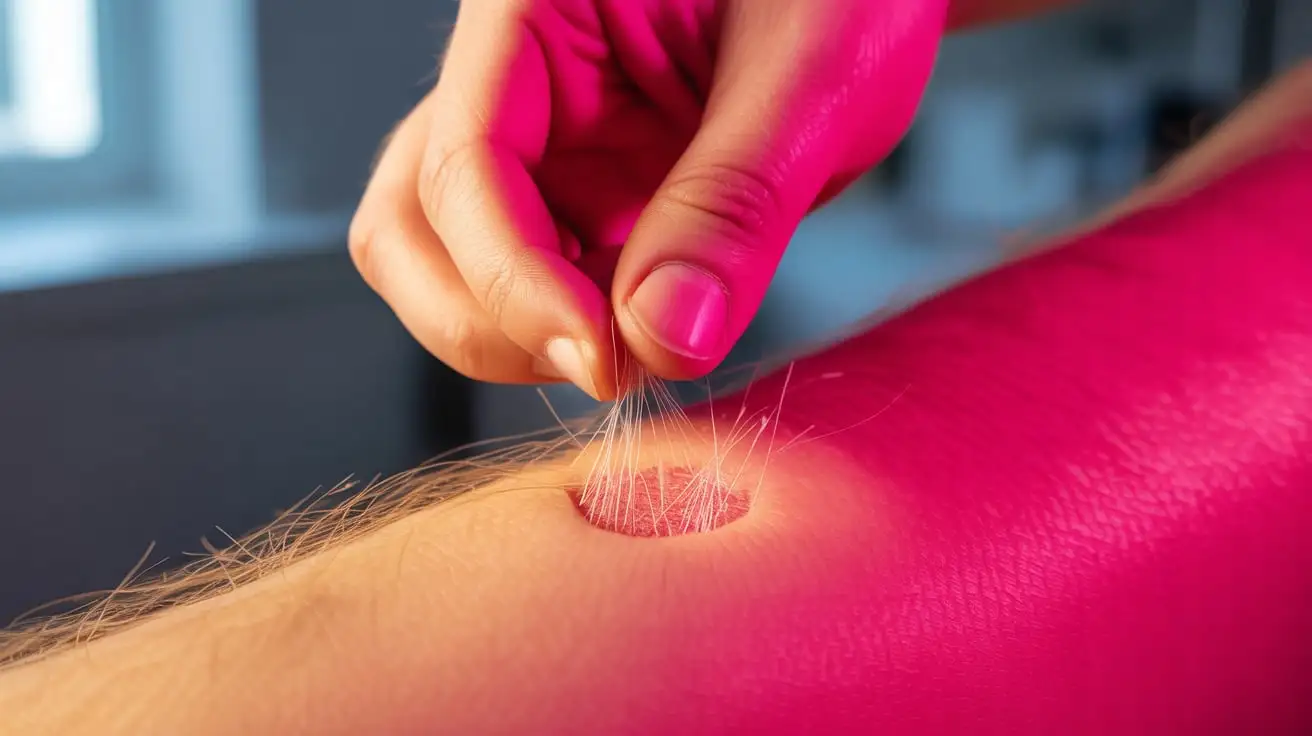
Cheerleading is more than just sharp motions and spirit—it’s a demanding athletic discipline that requires strength, stamina, and control. Without proper cheerleading conditioning, athletes risk poor performance and a higher chance of injury. Conditioning programs tailored for cheerleaders focus on building strength, jump power, and flexibility, the three pillars that fuel impressive routines and keep athletes safe on the mat.
Table of Contents
ToggleWhat Is Cheerleading Conditioning?
Cheerleading Conditioning refers to targeted exercises designed to prepare athletes for the sport’s unique physical demands. Unlike general fitness, it goes beyond basic cardio or strength training by incorporating movement patterns and drills that mimic stunts, tumbling, and jumps.
The benefits of Cheerleading Conditioning include:
- Improved stamina for long routines.
- Greater control and stability during stunts.
- Enhanced flexibility for splits, kicks, and flyer positions.
- Reduced risk of common injuries such as ankle sprains or back strain.
It is the bridge between regular exercise and sport-specific performance training.
Warm-Up Routine for Cheerleaders
Before pushing into intense exercises, warming up is non-negotiable. Dynamic stretches and light cardio prepare muscles, activate joints, and reduce stiffness. A simple 5–10 minute warm-up could include:
- Jogging in place or light jump rope.
- Arm circles and shoulder rolls.
- Leg swings front-to-back and side-to-side.
This primes the body for explosive movements while keeping flexibility safe and controlled.
Strength Conditioning for Cheerleaders
Strength is the foundation for bases, flyers, and tumblers alike. A well-rounded conditioning plan should hit three areas:
A. Core Strength
Exercises like planks, hollow holds, and Russian twists create a solid midsection. A strong core improves balance, keeps tumbling controlled, and allows flyers to hold positions in the air.
B. Upper Body Strength
Push-ups, resistance band presses, and handstand holds are excellent for building upper-body power. Bases rely on it to lift, while flyers need strong shoulders to stabilize during stunts.
C. Lower Body Strength
Squats, lunges, and calf raises strengthen legs for jumps and tumbling passes. Strong legs also improve landing mechanics, reducing stress on joints.
Jump Conditioning for Cheerleading
Jumps are one of the most eye-catching skills in cheerleading, and improving them requires plyometric training. Box jumps, tuck jumps, split jumps, and toe touch drills develop explosiveness and proper jump form.
Practicing these exercises consistently helps cheerleaders achieve higher jumps with pointed toes and strong body control—qualities judges and audiences notice immediately.
Flexibility Conditioning for Cheerleaders
Cheerleading Conditioning Flexibility is vital for everything from toe touches to flyer body positions. A balanced flexibility program includes both static and dynamic stretching. Examples include:
- Splits and over-splits for hip flexibility.
- Shoulder stretches for scorpions and bows.
- Backbends and bridges for tumbling mobility.
Building flexibility gradually prevents overstretching and injuries while allowing athletes to showcase impressive lines.
Balance & Stability Training
Balance and stability drills are especially crucial for flyers, but they also benefit the entire team. Single-leg stands, yoga poses like the tree pose, and balance ball exercises enhance control. A cheerleader who can maintain stability under pressure is safer and more effective in group stunts.
Endurance & Conditioning Workouts
Cheerleading Conditioning routines can last two minutes or longer, requiring athletes to perform at high intensity without losing energy. High-intensity interval training (HIIT), sprints, and jump rope workouts build endurance while mimicking the explosive demands of cheer.
Consistent conditioning helps cheerleaders execute their last tumbling pass with the same energy as their first motion.
Injury Prevention & Recovery
Strong performance is meaningless if injuries keep athletes sidelined. Conditioning should always include ankle strengthening, wrist stability drills, and proper landing practice after jumps. Mobility work, foam rolling, and scheduled recovery days ensure muscles repair and adapt.
This holistic approach makes cheerleading conditioning not just about power but also about longevity in the sport.
Sample Cheerleading Conditioning Workout Plan
Here’s a simple weekly structure for athletes to follow:
- Day 1: Core + Lower Body Strength
- Day 2: Flexibility + Jump Conditioning
- Day 3: Endurance and Stability Training
- Day 4: Full-Body Strength + Recovery Stretch
This balance of strength, flexibility, and endurance ensures well-rounded progress for cheerleaders of all levels.
What exercises improve cheerleading jumps?
The most effective exercises for jumps are plyometric drills like tuck jumps, box jumps, toe touches, and split jumps. These develop explosive leg power and improve jump height while teaching proper body control and pointed toes. Practicing jump-specific conditioning 2–3 times a week helps cheerleaders maximize form and endurance during routines.
How often should cheerleaders condition?
Cheerleaders should ideally condition 2–4 times per week, depending on their training schedule and competition season. Beginners may start with shorter sessions focusing on flexibility and stamina, while advanced athletes often add strength and plyometric work. Consistency is key—conditioning regularly improves performance and reduces injury risk.
Do cheerleaders need strength training?
Absolutely. Strength training is a vital part of Cheerleading Conditioning. Core strength provides stability for tumbling and stunts, upper body strength supports bases in lifts, and lower body strength powers jumps and landings. Without it, cheerleaders may struggle to execute skills safely and effectively.
What stretches help improve flexibility in cheerleading?
Cheerleaders benefit from dynamic stretches before practice (like leg swings, lunges with a twist, and arm circles) and static stretches after training (splits, bridges, and shoulder stretches). Consistent flexibility conditioning improves positions such as heel stretches, scorpions, and jumps, while lowering the risk of pulled muscles.
How can cheerleaders prevent injuries during conditioning?
Injury prevention starts with proper warm-ups, progressive training, and safe landing techniques. Exercises to strengthen ankles, wrists, and core stability are critical, as these areas take the most impact in cheerleading. Recovery methods such as foam rolling, mobility work, and scheduled rest days should also be part of every conditioning program.
Conclusion
Cheerleaders who dedicate time to cheerleading conditioning gain the strength to base stunts, the flexibility to perfect flyer skills, and the stamina to finish routines strong. Incorporating structured strength, jump, and flexibility training not only boosts performance but also safeguards athletes from preventable injuries.


